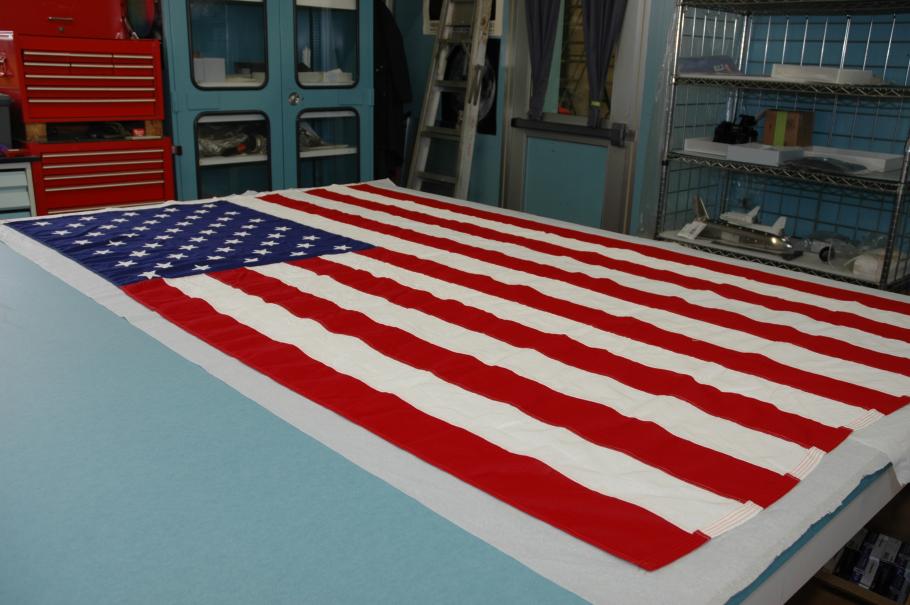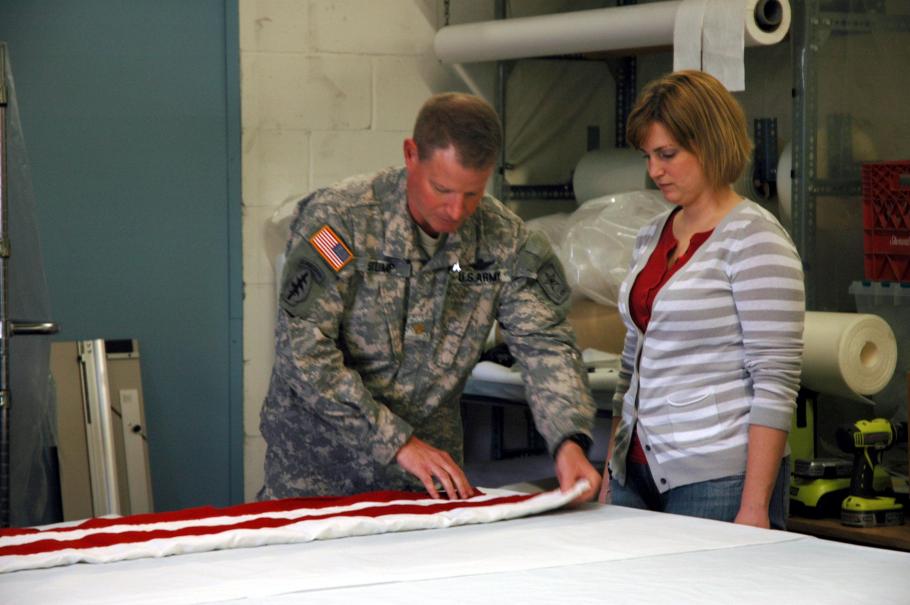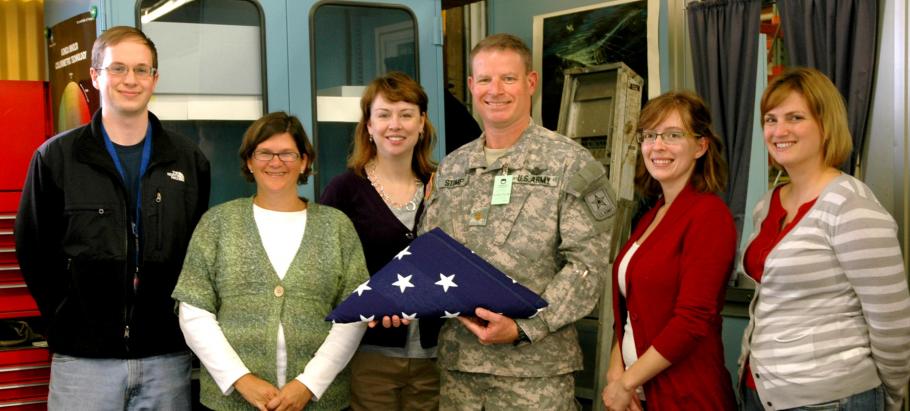The American flag is one of the most important symbols of the United States. For many, it symbolizes respect, honor, and freedom. For others, the flag represents reflection, courage and sorrow. The National Air and Space Museum cares for a number of American flags in the Smithsonian Institution’s national collection, many of which represent significant events in the history of space exploration or aeronautics. One belonged to Amelia Earhart. One was flown aboard Gemini 4 by NASA astronauts James McDivitt and Edward H. White in 1965. And the Museum has several replicas of the flag that was left on the Moon during the Apollo 11 lunar landing in 1969. Although each flag has a story that is worth telling, the care and preservation of these unique objects is also noteworthy.
Even though Museum staff are trained to handle cultural objects, sometimes an object requires special attention. With the upcoming installation of new displays in the Moving Beyond Earth gallery highlighting the history of the space shuttle program, a very special flag was chosen for display. This particular flag was flown over the U.S. Capitol on February 1, 2003 as a tribute to the crew of STS-107, who died when the space shuttle Columbia was lost during re-entry at the end of its mission. It was donated to the Museum by Dennis Hastert, then Speaker of the House of Representatives, to honor the astronauts.
This American flag was flown over the U.S. Capitol on February 1, 2003 as a tribute to the crew of STS-107, who died that day when the Space Shuttle Columbia was lost during re-entry at the end of their mission. It was donated to the Museum by Dennis Hastert, then Speaker of the House of Representatives, to honor the astronauts.
When it was decided to display the flag in the new gallery, the conservation staff unfolded the flag from its original box so that it could be examined, photographed, and cleaned. The curatorial team agreed that the flag should be folded in the traditional, triangular pattern before putting it on display. Because the flag represents an American tragedy of significant proportion and out of respect for the proper treatment of the artifact, the Museum invited a member of the military to assist with folding the flag. Army Major Warren R. Stump, who recently returned from Afghanistan, assisted the conservation staff.
This American flag was flown over the U.S. Capitol on February 1, 2003 as a tribute to the crew of STS-107, who died that day when the Space Shuttle Columbia was lost during re-entry at the end of their mission. Here the Flag is folded by Major Warren R. Stump. Moving Beyond Earth gallery contractor Stephanie Spence is assisting
Major Stump, with assistance from Stephanie Spence and Dawn Planas (conservation contractors for the Moving Beyond Earth gallery) folded the flag, while I (Lisa Young) read an explanation of the meaning behind each of the thirteen folds in a properly-folded American flag. The flag is folded to represent the original thirteen colonies of the United States. Each fold also carries its own meaning. According to the description, some folds symbolize freedom, life, or pay tribute to mothers, fathers, and those who serve in the Armed Forces. When the flag is completely folded and tucked in, it takes on the appearance of a cocked hat, representing the soldiers who served under George Washington, the sailors and marines who served under John Paul Jones, and the many who have followed in their footsteps.
Now folded into the traditional triangle shape, the STS-107 Capitol-flown flag will be displayed in the Moving Beyond Earth gallery. The flag will serve as a reminder of the heroes who flew aboard the Space Shuttle Columbia, and who paved the way for further space exploration. It will also serve as a reminder to Museum staff about how special objects take on new meaning as they are interpreted for public display. We are grateful to Major Stump for helping the Museum to pay full respect to this significant artifact.
This American flag (flown over the U.S. Capitol on February 1, 2003 as a tribute to the crew of STS-107) is presented to the Moving Beyond Earth Curator, Margaret Weitekamp and the conservation team. From left to right, John Holman, Lisa Young, Margaret Weitekamp, Major Warren Stump, Dawn Planas and Stephanie Spence.



